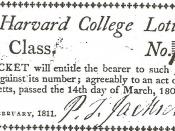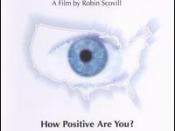In our lives, it is important to exercise self-command. However,
we should not be so concerned with the future that we stifle the present.
The question becomes what balance should we strike between self-command
and risks? What kinds of risks are acceptable or unacceptable? In this
essay, we will use two examples of risks to show the distinction between
the two and arrive at a conclusion as to the balance one should have
between risk and self command. The first example we will use is of a
person who spends his life savings on a lottery ticket and does not win
the lottery. The second is of a person who spends his life savings on a
hunch regarding a cure for AIDS, a hunch that is false. Before we make
this distinction, however, it is necessary to define the terms acceptable
and unacceptable risks.
Acceptable and Unacceptable Risks
There are several ways in which one could define which risks are
acceptable. One could say, for example, that the only acceptable risk is
one for which the odds of success are greater than the odds of failure.
Another definition of acceptable risk might be a risk that does not harm
one's future. We might also say that the only acceptable risk is one
where the aggregate happiness is increased, thus increasing the moral good
of the risk, an idea which is based on John Stuart Mill's Utilitarianism.
Finally, we might define a morally good risk in a Kantian way by saying
that the only acceptable risk is one which is rationally thought out
(Thomas, lecture).
Now that we have several definitions of acceptable risks, we may
ask how these definitions, which seem piecemeal and unrelated, can all
combine to form one definition of acceptable risk. The best way to do...


